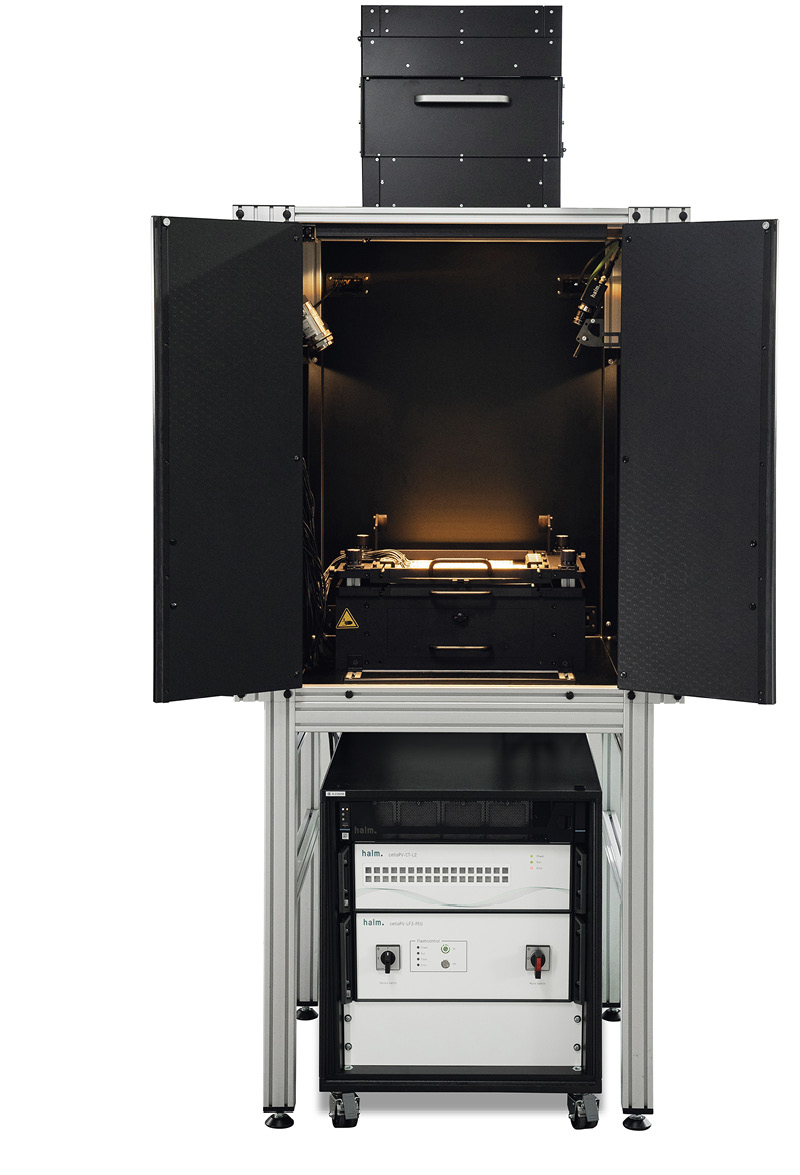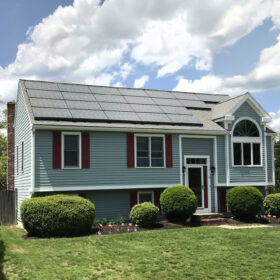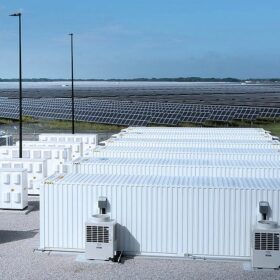In silicon solar manufacturing, cells and modules are “flashed” at the end of the production line, with a pulse of light lasting a fraction of a second. This is enough for the device to start absorbing light, and for the system to gather data on its quality and efficiency. Inline testing also helps operators spot faults or quality issues on the line. The testing is crucial to determining the power rating used to sell the module and design systems based on it, and to ensure that agreed standards for quality are being met.
As perovskite solar cells and tandem devices combining them with silicon have caught the eye of researchers and manufacturers in recent years, it’s become clear that the same testing standards that work for silicon PV cannot be applied “as is” to this technology. Mobile ions within perovskite materials can react unpredictably to light exposure and electrical bias, making it more difficult to achieve a stable state and an accurate simulation of behavior under natural light in such a short time.
“It’s a much more dynamic system than a silicon cell, and because of these dynamics you need more time to properly test these devices,” said Peter Pasmans, business developer for perovskite markets at testing equipment supplier Eternal Sun.
Limiting these mobile ions and their impact on photovoltaic performance is one area researchers are working on, and many note that their initial stability is improving, enabling shorter testing cycles. But most agree that new testing protocols will still be needed. In the laboratory setting, researchers are settling around a standard involving light exposure with maximum power point tracking until a stable state is observed, typically for at least several minutes, before a measurement is taken.
“In a research lab you just put your cell under the simulator and wait a couple of minutes for it to plateau. You track the maximum power point or the open circuit voltage, and then you take a measurement,” explained Ed Crossland, CTO of tandem cell producer Oxford PV. “Obviously that’s not production compatible. You’ll be at terribly low speed.”
More standards are forthcoming, with collaborations between industry and research institutes aimed at ensuring all are speaking the same language when it comes to testing for long-term durability and performance under different climate conditions. However, these won’t be subject to the time constraints of testing and characterization on a production line.

Pre-test conditioning
How standards for production line testing will develop remains to be seen. But those working in the field agree that new protocols will require more than a flash of light lasting a few milliseconds, and most are working with a pre-test light soaking stage to bring the device to a stable, or at least reproducible, state before testing.
“What we need is some preconditioning to prepare the sample and the slow-moving ions to be in a representative state for their outdoor working environment,” said Klaus Ramspeck, R&D director at PV testing equipment supplier halm elektronik.
Crossland said Oxford PV works with a similar method, which he calls a “dumb” light soak, prior to the test. This places the cell or module under
illumination for several seconds as it moves to the tester.
“That’s fairly easy to implement within standard inline handling procedures,” he explained. “You light soak the cells under a relatively easily controlled environment, and then it goes through a standard test to give a quick IV measurement under a controlled and calibrated spectrum.”
The cycle time is slightly longer than for some silicon PV production lines, but still manageable in terms of throughput. Crossland said Oxford PV can currently test its tandem cells at a rate of between 3,000 and 5,000 per hour, with equivalent figures for full size modules. Working groups have prepared draft standards for this type of testing, and with positive results so far they are expected to be formally introduced within a year or two.
There are still plenty of specifics to be discussed. Many will depend on the exact set of materials that manufacturers look to take into commercial production. A range of potential tandem cell materials is under investigation to form every layer, from the active perovskite itself to protective outer layers. And all of this could influence the behavior under testing.
“Silicon is silicon – you have several cell types, but the differences are relatively small compared to what you can find with perovskites,” said Eternal Sun’s Pasmans. “There are so many variations, which makes discussion about preconditioning and testing more difficult.”
One condition might favor a certain type of device, and it could take more time and work to reach a consensus that gives a comparable result for all devices.
Other ways to speed up the process are also under discussion, including tools that can test multiple cells or modules at once. Another approach would take initiative from manufacturers working with other thin-film PV materials. A sample of modules would be taken offline for the longer stabilized test sequence, followed by correlation between inline and offline measurements.
“What we have is not yet a really direct, fast measurement. It’s more like, if we measure this and compare with a slower measurement then we know what the output is under stable conditions,” said Ramspeck.
Pasmans added that taking samples for offline testing in this way gives manufacturers a higher degree of certainty in their results, and thus in the guarantee conditions they can offer to buyers. “The less certain you are the lower you need to label your power rating, to have performance you can guarantee for the long-term,” he explained.

Added complexity
Alongside power and efficiency ratings, inline testing allows manufacturers to gather further data in the form of electroluminescence (EL) and other imaging that can reveal issues such as cracked cells or poor connections. Since tandem cell devices are inherently more complex than single junctions, there is more data to collect here. And the industry is still learning what’s important to look for in terms of quality assurance. Crossland noted that since perovskite tandem cells are essentially a combination of silicon PV and thin-film technologies, there is knowledge from years of industrial production to build on. But the introduction of new materials means there’s more to look out for as well. “It’s a different defect catalogue, and there’s still plenty of refinement that’s going on in understanding what are the critical defects. But that’s normal in this state of deployment,” he said.
With its tools for testing tandem cells, halm has developed a method using cameras and filters to take EL images of the top and bottom cell, to more easily spot and locate defects. “You get certain conditions that lead to an interaction of the defects between both images. You cannot just image one of the cells and see at least the defects of this. You can never be sure that you are not seeing defects that are effectively coming into the image from the other sub cell,” said Ramspeck.
Measuring bifacial performance is another sticking point. This is more complex for a tandem module since light incident on the front side is roughly equally split between the top and bottom sub-cells, while light on the rear side is completely absorbed in the silicon cell. “The area that’s not fully ready yet is how we address bifaciality. All that is still being worked out,” said Crossland.
He added that the questions include whether and how to illuminate both sides together or separately, and how to get rid of ‘cross contamination’ from illumination meant for the other side. For now, Oxford PV’s solution is to certify modules to a monofacial standard, with the energy yield from the rear side as an extra. “The precise performance enhancement from the rear isn’t so easily measured, but customers are confident they are going to get additional energy yield from that,” he said.
Eternal Sun says it has developed a two-side illumination solution for tandem cells, based on existing methods for testing bifacial silicon cells, and is working on updating and improving spectral control to better suit tandem cell testing.
Overall, consensus is that while there are still some things to work out, there will soon be testing standards applicable to perovskite-silicon tandem devices introduced in manufacturing.
“I believe that a quick measurement method will be available in time, together with the overcoming of other stability hurdles. I’m quite optimistic that measurement won’t be a final limiting factor for tandem devices to go into mass production,” said Ramspeck.
This content is protected by copyright and may not be reused. If you want to cooperate with us and would like to reuse some of our content, please contact: editors@pv-magazine.com.









By submitting this form you agree to pv magazine using your data for the purposes of publishing your comment.
Your personal data will only be disclosed or otherwise transmitted to third parties for the purposes of spam filtering or if this is necessary for technical maintenance of the website. Any other transfer to third parties will not take place unless this is justified on the basis of applicable data protection regulations or if pv magazine is legally obliged to do so.
You may revoke this consent at any time with effect for the future, in which case your personal data will be deleted immediately. Otherwise, your data will be deleted if pv magazine has processed your request or the purpose of data storage is fulfilled.
Further information on data privacy can be found in our Data Protection Policy.